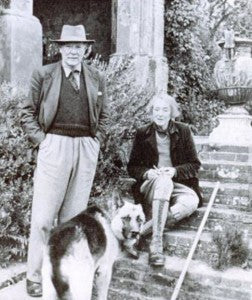Vita Sackville-West has many claims to fame. She was an accomplished writer and poet, circulated amongst the Bloomsbury Group attributed with modernising British social attitudes during the inter war years, and she was Virginia Woolf’s lover. She married Harold Nicolson a diplomat and journalist in 1913. It was with her husband that she bought Sissinghurst Castle in 1930. The Elizabethan manor in Kent had once been the ancestral seat of Vita’s family.
Harold and Vita combined interests and passions to develop the gardens together. Harold was interested in the formal structure of the garden, and had an important influence on the layout of the beds, which attempted regularity and intimacy. Vita was interested in a profusion of romantic flowers and colours providing contrasting informal planting. It was all about using as many plants as possible to create lavish impact. The innovation they brought about was the concept of “rooms” or “squares” dividing the garden up into smaller enclosures, each with its own character, whilst maintaining interesting views and vistas through the garden as a whole. This produced the Rose Garden, White Garden, Nuttery and Orchard Garden. Vita’s enduring legacy is her radical approach to colour, exemplified in the White Garden, where she landed on the concept of single colour planting schemes. Today, this is one of the most popular gardens in the National Trust estate attracting around 200,000 visitors a year.
Vita’s enthusiasm for gardening together with her practical and experimental approach made her very popular with the gardening public. She had three firm gardening principles: The first was ruthlessness – if it looks wrong or feels wrong then change it! Second was not to be too tidy in a garden, let self-seeded plants grow where they naturally fall, wild flowers mixing with cultivated plants in a garden was a bonus not a disaster. Thirdly, have an architectural plan, a colour plan and a seasonal plan. Vita passed on her ideas and enthusiasm through her writing in a weekly article on gardening for the Observer, which she continued to do for fourteen years up until a year before she died in 1962.
The Gardening Community
Inspirational gardeners: Vita Sackville-West





